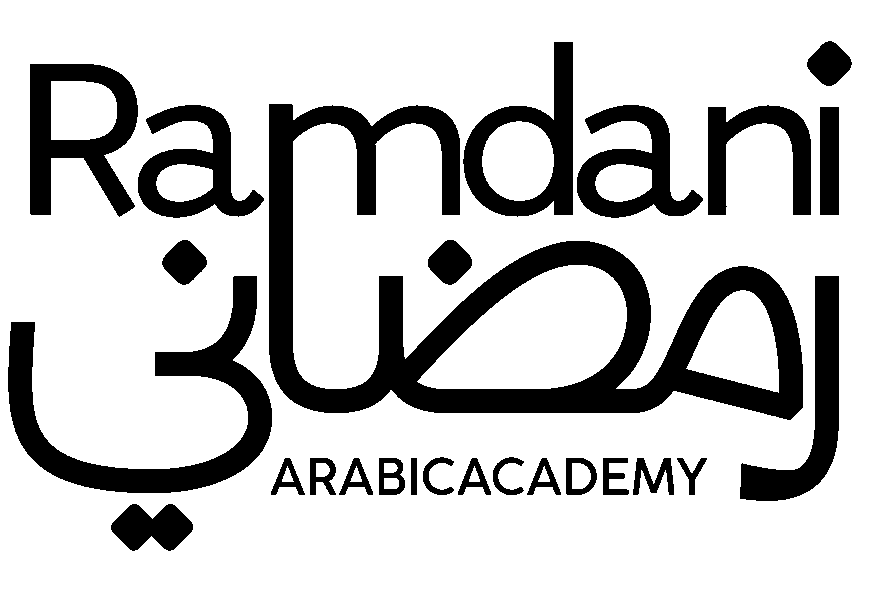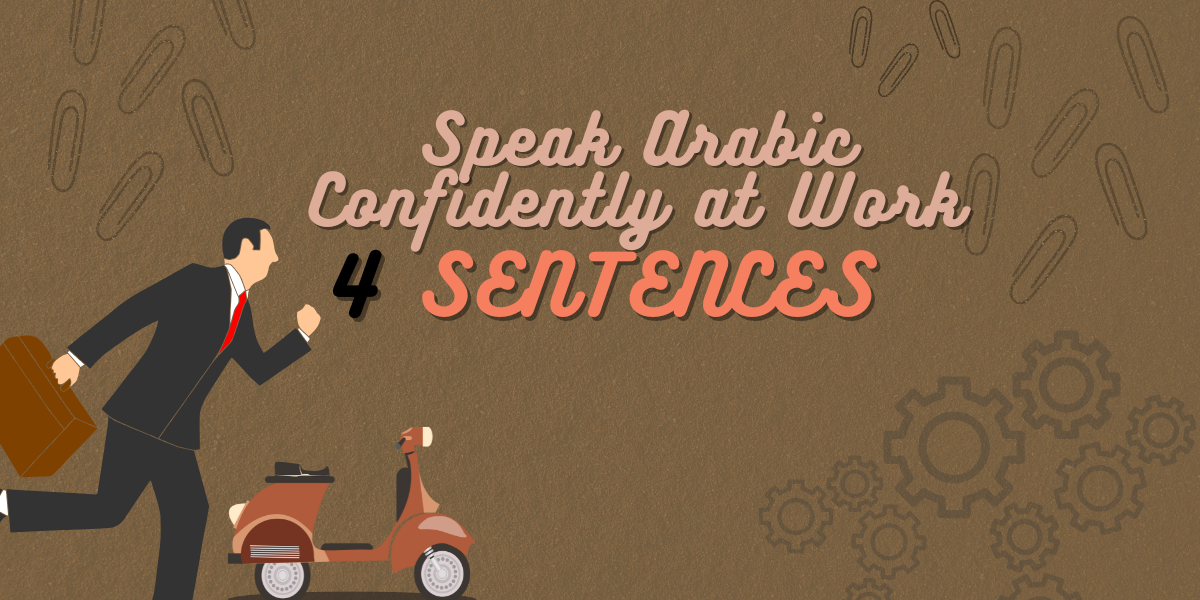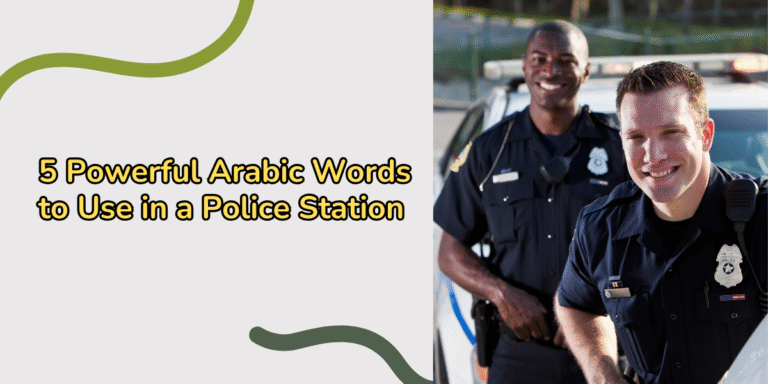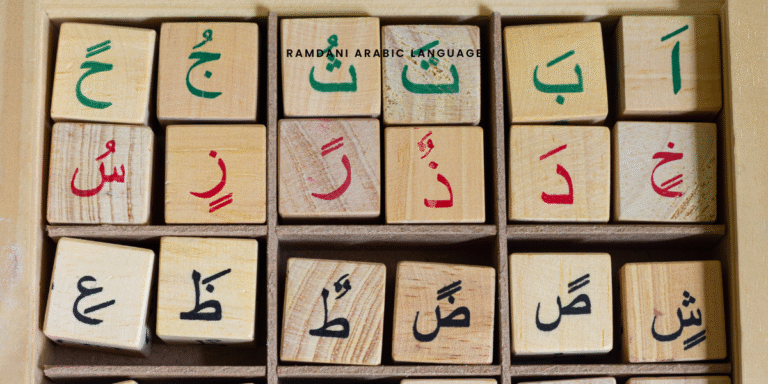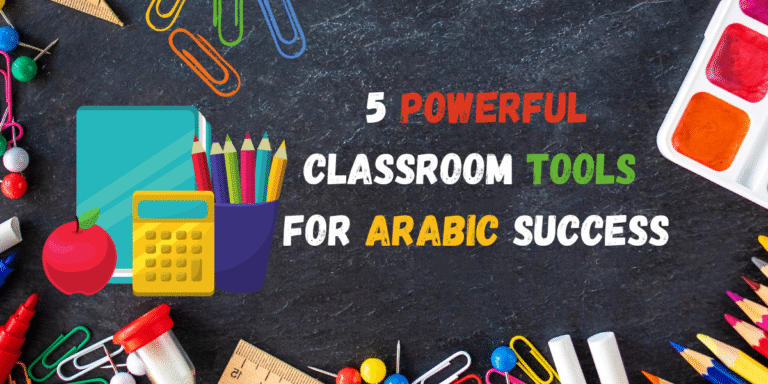Speak Arabic Confidently at Work: 4 powerful Sentences …
Learning Arabic goes beyond memorizing vocabulary or studying grammar rules. It’s about understanding how the language lives in daily situations, in workplaces, and in the words people use to connect and express ideas. When you start learning Arabic, you realize quickly that real communication depends on knowing what to say in real moments, not just what’s written in a textbook.
In every professional or work environment, people rely on short, direct sentences to communicate clearly. These sentences can open a meeting, show respect, express agreement, or ask for clarification. If you don’t know how to use them naturally, your Arabic may sound formal or disconnected from real life. For learners who want to speak Arabic in a work setting, mastering these simple, useful sentences makes a big difference.
Arabic is rich in meaning and context. One sentence can carry different shades of politeness, tone, and purpose depending on who you speak to. For example, saying “شكراً” (thank you) can sound casual or very polite depending on the situation and tone. Understanding when and how to use each expression helps you sound confident and professional. It also builds trust with your Arabic-speaking colleagues or clients.
Many learners focus too much on grammar and forget that language is a social tool. In work environments, your ability to build relationships often depends on how you use words, not only on how correct your grammar is. For instance, greeting someone properly in Arabic can set a positive tone for the entire interaction. Phrases like “صباح الخير” (good morning) or “كيف حالك؟” (how are you?) may seem basic, but they carry cultural weight. They show respect, friendliness, and professionalism.
At Ramdani Arabic Academy, we’ve seen thousands of learners struggle with this exact issue. They understand Arabic rules, but they find it hard to use Arabic naturally in professional contexts. That’s why we focus on practical language—the Arabic that people actually speak every day. In this series, we’ll explore four essential sentences you can use in Arabic work situations. These sentences are short, powerful, and easy to adapt to any context. Each one represents a specific function in daily communication, such as greeting, confirming, requesting, or showing appreciation.
Our goal is not to teach you isolated phrases, but to help you understand how and why they are used. You’ll learn the structure, tone, and common variations. You’ll also see examples from real professional conversations so that you can start using them confidently in your own work.
Arabic connects people. Whether you’re writing an email, joining a meeting, or introducing yourself to a new colleague, using the right words in the right way leaves a strong impression. It shows respect for the language and for the culture behind it.
This article will help you move beyond classroom Arabic and into real communication. It’s for anyone who wants to sound natural, respectful, and professional when using Arabic at work.

Greeting and Starting Conversations at Work
The first sentence every Arabic learner should master in a professional setting is “السلام عليكم” (As-salamu alaykum). It means “peace be upon you.”
This greeting is more than a simple hello. It carries cultural meaning and sets the tone for respect and goodwill. In Arabic-speaking workplaces, this phrase is used in every interaction—entering a meeting, greeting a coworker, or starting an email. It signals professionalism and good manners.
When someone says “السلام عليكم,” the expected response is “وعليكم السلام” (wa alaykum as-salam), meaning “and peace be upon you too.” This short exchange establishes mutual respect before any discussion begins. It creates a friendly, calm atmosphere that helps communication flow more easily.
If you want to sound more polite, you can use the full version:
“السلام عليكم ورحمة الله وبركاته”
(peace be upon you, and the mercy and blessings of God).
This form is common in formal or religious settings but less used in quick, daily exchanges. In an office, the shorter form is usually enough.
In Arabic culture, greetings matter. You don’t start talking about work right away. You begin with acknowledgment and respect. Even if you’re in a hurry, skipping this part can make you seem distant or impolite. For example, in an English-speaking office, people may start meetings with “Let’s get started.” In Arabic, you start with peace before business.
Here’s how you can use it naturally at work
- When you enter a room say, “السلام عليكم” before speaking about work.
- When you join an online meeting greet everyone with “السلام عليكم” before introducing yourself.
- When you send an email start with “السلام عليكم” in the first line before writing your message.
These habits show cultural awareness and professionalism.
Another useful variation is “أهلاً وسهلاً” (ahlan wa sahlan), which means “welcome.” This phrase works well when greeting clients, guests, or new colleagues. It expresses hospitality and friendliness, two values that hold strong importance in Arabic culture.
For example, if a new partner visits your company you might say
“أهلاً وسهلاً بكم في شركتنا” — “Welcome to our company.”
Or when someone joins an online call
“أهلاً وسهلاً بكم، سعداء بانضمامكم إلينا” — “Welcome, we are glad to have you with us.”
Notice how these sentences sound warm but still professional. They make the other person feel valued and included.
When you master greetings like “السلام عليكم” and “أهلاً وسهلاً,” you do more than follow rules. You show emotional intelligence and respect for the Arabic communication style. These phrases are short, but they open doors to stronger professional relationships.

Asking for Clarification Politely
The second sentence to master in Arabic work communication is “من فضلك، هل يمكنك توضيح ذلك؟” (Min fadlik, hal yumkinuka tawdih dhalik?)
It means “Please, can you clarify that?”
In any workplace, asking for clarification shows professionalism. It tells others that you care about accuracy and that you want to understand before acting. In Arabic, how you ask matters. Tone and wording show respect and humility.
Arabic culture values politeness and indirect speech. Instead of saying “Repeat that” or “I don’t understand,” which may sound too direct, it’s better to frame your request softly. “من فضلك” (please) sets a respectful tone. “هل يمكنك” (can you) makes the question polite rather than demanding.
Use this sentence when you don’t understand instructions, need more details about a project, or want someone to restate an idea in a meeting. It keeps the conversation professional and calm.
Examples
- “من فضلك، هل يمكنك توضيح المطلوب بدقة؟”
(Please, can you clarify what exactly is required?) - “من فضلك، هل يمكنك توضيح النقطة الأخيرة؟”
(Please, can you clarify the last point?)
These sentences sound natural and show interest in understanding, not confusion. They fit any situation—email, phone call, or meeting.
If you want a shorter and more casual option, you can say
“ممكن توضح أكثر؟” (Momkin tawdah akthar?)
This means “Can you explain more?”
It’s suitable with colleagues you know well but not in formal settings.
When speaking to a manager or client, always use the full version with “من فضلك.” Respectful phrasing builds credibility and trust. Arabic professionals appreciate when learners show cultural awareness through language.
If you need clarification by email, you can write
السلام عليكم
من فضلك، هل يمكنك توضيح بعض التفاصيل حول المشروع؟
شكراً لتعاونك
This email sounds clear and polite. It follows Arabic business etiquette by starting with peace, including a respectful request, and closing with thanks.
Learning how to ask for clarification effectively helps prevent misunderstandings. It also improves teamwork because people see that you care about clear communication.
At Ramdani Arabic Academy, many learners tell us they feel nervous about asking questions in Arabic meetings. They worry about sounding unprepared. We teach that asking for clarification is a sign of professionalism, not weakness. Clear understanding saves time and prevents mistakes.
The goal is to use Arabic confidently, even when you need help. Polite clarification keeps the conversation open and productive.

Agreeing or Confirming Professionally
The third essential sentence in Arabic work communication is “نعم، فهمت ذلك” (Na‘am, fahimt dhalik)
It means “Yes, I understand that.”
In any professional environment, confirming that you understand instructions or information is critical. It prevents confusion, shows responsibility, and signals that you are attentive. In Arabic, the way you confirm matters. Simple words like “نعم” (yes) combined with clarification or acknowledgment make your response polite and professional.
Using “نعم، فهمت ذلك” is straightforward and respectful. It communicates that you are paying attention and ready to act. Adding “شكراً” (thank you) afterward makes it even more courteous:
“نعم، فهمت ذلك، شكراً لك” – “Yes, I understand that, thank you.”
You can use this sentence in many situations:
- After receiving instructions from a manager
- During a meeting when a task is explained
- In email communication to acknowledge understanding
For example:
المدير: الرجاء إرسال التقرير قبل الساعة الخامسة.
الموظف: نعم، فهمت ذلك، سأرسله قبل الموعد.
Translation:
Manager: Please send the report before 5 PM.
Employee: Yes, I understand that, I will send it before the deadline.
This response shows clarity, professionalism, and commitment. It also reassures the other person that the task will be handled correctly.
Another common variation is “تمام، فهمت” (Tamam, fahimt) – “Okay, I understand.”
This is slightly more casual but still professional enough for daily office use. It works well with colleagues or in informal team meetings.
When you combine confirmation with politeness, it strengthens workplace relationships. In Arabic culture, showing attentiveness and respect through your words is just as important as completing the task. Simply saying “yes” is not enough. Adding context or acknowledgment demonstrates emotional intelligence and cultural awareness.
At Ramdani Arabic Academy, we emphasize practice with these phrases in real-life simulations. Students learn to respond naturally in Arabic conversations, emails, and meetings. The goal is not just memorization but practical usage. You’ll gain confidence in speaking, writing, and understanding professional Arabic, which improves your efficiency and credibility.
Mastering confirmation phrases like “نعم، فهمت ذلك” ensures smooth communication. It reduces mistakes and shows your team that you are reliable. Using these sentences correctly separates learners who sound fluent from those who struggle in professional environments.
Expressing Appreciation at Work
The fourth essential sentence in Arabic work communication is “شكراً جزيلاً على مساعدتك” (Shukran jazeelan ‘ala musa‘adtik)
It means “Thank you very much for your help.”
Showing appreciation is a key part of workplace communication in Arabic. Gratitude strengthens relationships, encourages teamwork, and demonstrates professionalism. Using polite, specific phrases makes your acknowledgment sincere and meaningful.
In Arabic culture, thanking someone goes beyond etiquette—it shows respect and recognition of effort. Simply saying “شكراً” (thank you) is polite, but adding “جزيلاً” (very much) emphasizes genuine appreciation. If someone took extra time to help you or provided important support, this sentence signals that you value their contribution.
Examples of usage:
- After a colleague assists with a project
- When a manager provides guidance or advice
- In emails to clients or partners who offered support
For instance:
زميلي: إليك التقرير الذي طلبته.
أنت: شكراً جزيلاً على مساعدتك، كان ذلك مفيداً جداً.
Translation:
Colleague: Here’s the report you requested.
You: Thank you very much for your help, it was very useful.
This sentence can also be adapted for formal written communication. Starting an email with “أود أن أشكركم جزيلاً على تعاونكم” – “I would like to thank you very much for your cooperation” is professional and appropriate for clients or business partners.
For casual workplace interactions, you can shorten it to “شكراً لك” (Shukran lak) or “شكراً جزيلاً” (Shukran jazeelan). These variations still convey politeness but feel lighter and conversational.
At Ramdani Arabic Academy, we teach learners how to use appreciation phrases naturally. Many students hesitate to express thanks in Arabic because they worry about tone or formality. Practicing these sentences in real-life contexts helps build confidence. It also ensures your communication is culturally appropriate and leaves a positive impression.
Expressing gratitude is not only polite but strategic. It fosters collaboration, builds trust, and makes you stand out as someone attentive and respectful. In Arabic work culture, these small gestures carry weight and improve professional relationships.
Mastering these four sentences—greeting, asking for clarification, confirming understanding, and expressing appreciation—forms a strong foundation for communicating in Arabic at work. Using them naturally will make you sound confident, professional, and culturally aware.
practical advice
Mastering a few key sentences can transform the way you communicate in Arabic at work. Learning Arabic is not just about grammar or vocabulary—it’s about using language effectively, respectfully, and confidently in real situations.
The four essential sentences we covered—greeting, asking for clarification, confirming understanding, and expressing appreciation—serve as the backbone of professional communication. When used correctly, they help you:
- Build trust with colleagues and clients
- Avoid misunderstandings
- Demonstrate respect and cultural awareness
- Improve teamwork and collaboration
Practical advice for using these sentences:
- Practice daily: Incorporate them in emails, calls, or meetings. Repetition helps make them natural.
- Observe context: Adjust the tone and formality depending on the person and situation.
- Combine phrases: Use greetings and appreciation together to make interactions smoother.
- Be confident: Polite and clear communication leaves a stronger impression than perfect grammar alone.
At Ramdani Arabic Academy, we focus on practical Arabic for learners worldwide. Our courses, articles, and lessons emphasize real-life usage, especially for work and professional settings. Every lesson is designed to help you use Arabic naturally, speak confidently, and understand cultural nuances.
I, Ramdani Mohamed, founded this academy to provide learners with tools that go beyond traditional textbooks. Through years of teaching experience, I noticed learners often struggle with practical communication. Our academy addresses that gap with targeted lessons, examples from real-life situations, and guidance to apply Arabic effectively in work and daily life.
Whether you are writing an email, joining a meeting, or starting a conversation with a colleague, using these simple sentences will make a significant difference. They are small, easy to remember, and powerful when applied consistently.
Arabic is a language of connection. By mastering these sentences, you are not only improving your language skills but also building professional relationships, showing respect, and creating opportunities for success.
Take time to practice, observe native speakers, and apply these sentences in your work environment. Your confidence and fluency will grow faster than you expect when you focus on practical communication.
